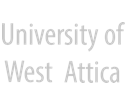Dual Energy Inverse Mapping Technique to Estimate Calcium-to-Phoshorus Mass Ratio in Bone Quality Assessment
Abstract
Bone quality is a broad term encompassing factors affecting the structural and material properties of bone. X-ray dual-energy method (XDEM) provides one way to explore bone quality in terms of bone tissue material properties. In this study a XDEM is presented for the determination of Ca/P mass ratio, parameter which appears to play an important role in bone health. The low- and high-energy intensity measurements were combined, using a nonlinear mapping function, to cancel out the soft tissue structures and generate the dual energy (DE) Ca/P mass ratio value. The total entrance-skin exposure from low- and high-energy measurements was constrained so that it is similar to diagnostic-examination levels. The DE simulated data were exported using variable Ca and PO4 thicknesses, while the tissue thickness was kept constant. The thickness of each material was fitted separately using a nonlinear least squares minimization algorithm. The functional forms of inverse functions that have been investigated are the linear, quadratic, cubic, and conic functions. The inversemapping functions were found to vary as analytic functions of second (conic) and third (conic) order. A nonlinear eight term rational function was selected for dual energy calibration which appeared to be capable of high fitting accuracy while requiring relative few terms
Keywords
Bone quality, dual energy X-ray, X-ray simulations, nonlinear functions, Ca/P mass ratio
DOI: 10.26265/e-jst.v9i4.780
Refbacks
- There are currently no refbacks.






